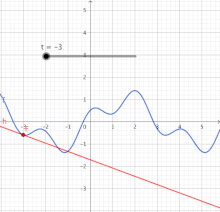2D Animation
The course focuses on generation of 2D animations applied on a special use-case. The learning module is based on the Open Community Approach and therefore it uses OpenSource software for creating the animation.




Target group
editThe following target groups for this learning unit is:
- Authors in Wikiversity that want to add an GIF-animation to their learning resource.
- Learners that want to create GIF-animation or 2D video animations in general.
Open Community Approach
editThis learning resource is based on the Open Community Approach and therefore the
- Open Educational Resources are placed on Wikiversity and
- Open Source Software is used that learners perform the learning resource without buying a software a
- Pencil2D for creating a 2D animations on Linux, Windows and MacOSX. so that learner can compare their learning steps even if they use different operating systems.
- ImageMagick as a command line tool for creating 2D GIF animation for automated generation from a sequence of images
- In this tutorial you can also combine those techniques by exporting a sequence of images from Pencil2D and create a GIF animation with the convert command from ImageMagick.
History of Learning Resource
editThe learning resource was generated during the COVID-19 epidemics in 2020. An 2D animation was required for the submodule about mathematical modelling for animation of the SIR-model (Susceptible, Infected, Recovered). It was necessary to use a software tool to create the animation. The analysis of available learning resourcess in Wikiversity about 2D Animations triggered the establishment of this learning resource for 2D animations with open source software. An equivalent starting point of this type of learning resource was currently missing. The activity part in the course was developed with Open Source Pencil2D as tool for gaining own experiences in creating a 2D-animations. The practical experiences are to first step to understand the basic principles of 2D animations. Use-case driven learning resources take the desired outcome/product (here the GIF animation for the SIR-model) as framing example for the basic principles in the learning resource.
Learning tasks
editThis learning task will explore 3D and 2D modelling of animations. The final product of an 2D animation is the SIR-model for the COVID-19 learning resource. The basic constituents for a 2D animation will be addressed in the learning resource by looking into the main steps of 2D animations (see Create a 2D Animation).
- (3D Modelling) Explore the course material about 3D Modelling and explain the differences and similarities between 2D and 3D animation (e.g. webbased 3D animations in AFrame).
- (2D Animation - Components) Select a subject for your animation and derive the requirements and constraints for 2D Animation process .
- Explain why it is necessary to decompose moving objects from the background image!
- What are the advantages of a animation produced as GIF animation in comparison to a video animations (e.g. audio,...)
- How can you make sure, that all objects in the animation are visible. Organisation in layers.
- What are the benefits of a camera module moving over an image and export the movement over the image as GIF-animation in comparison of paint new parts of the animation at the image borders while moving?
- (Pencil2D) Explore the Open Source Software Pencil2D for this purpose and explain, what Onions View does for you. Compare the digital work with
- (2D or 3D Animation) Compare the PROs and CONs of 2D animations in comparison to 3D animations and identify the requirements and constraints, which guide you towards the modelling of a 3D scenario or a flat 2D animation.
- (Export Format and Storage Format) A GIF format of the animation is easy to use in webpage or in Wikiversity with a learning resource for visualization. Also a video that contains additional audio comments can be shared and used within learning resources.
- (AudioSlides4Web) Explain how GIF-Animation can be used in a web-based presentation with audio comments, like
- (Shell Script) In this learinng task we will address the generation of images from the command line with a shell script. Shell scripts are helpful if you want to use automation for the generation of 2D animations.
- (Animated Avatar) An Animated Avatar can be a GIF animation of a face talking that can be used for a minimal bandwidth consumption for Audio-Video-Compression in a low bandwidth environment.
Create a 2D Animation
editContent specific subpages support you in creating a 2D animation (basic example is the SIR-Model animation):
- Open Source Software
- Basic Concept
- Background Images
- Vector Images
- Raster Images
- Camera Movements
- Audio Tracks with Video Export
- Export Formats as GIF-Animation or Video
- Image_Magick - create GIF animation from a list of file with ImageMagick from Shell
See also
editExternal links
editExternal links are essential to obtain additional information and to compare the contents here with other sources that support the Open Community Approach for learning and capacity building.
- Pencil2D - Open Source software for creating 2D animation
- GitHub Repository wikiversity_files with additional files for this learning resource (see section 2D Animation)